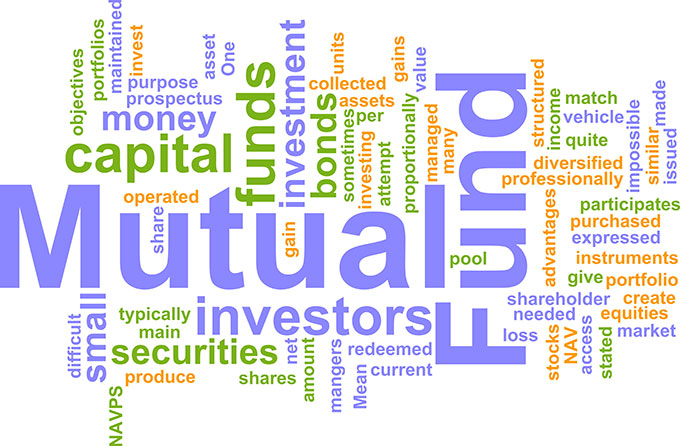
This graphical calculator allows investors to quickly determine the internal rate of return (IRR) on an annual basis while allowing the entry of up to 20 irregular payments & withdrawals.
This tool helps you figure the average annual rate of return on an investment that has a non-periodic payment schedule.
Instructions: Enter date of the initial investment, and then for each investment and withdrawal after that. All transactions entered after the first must have happened later than the initial line, but do not need be entered in the order they occurred. For an entry to be figured in the calculations, the month, day, and 4-digit year, and the investment or withdrawal is required. The first line and at least 1 withdrawal are required in order to complete this calculation.
This calculator will make up to 100,000 attempts at finding a solution for the cash flow schedule. If it reaches the maximum number of tries you will receive an alert message warning you of the potential inaccuracy of the result.
Investment vehicles range from active, entrepreneurial ventures, to hands-off savings and money market accounts. And though not every investor is an independent business owner, personal money managers striving to get ahead often share common portfolio strategies. In practice, the most successful investors count on well-executed assortments, vested across various investments, including stock market securities, CDs, savings accounts and annuities.
Effective investment tactics respond to a number of individual characteristics, influencing how a personal portfolio takes shape. Age, risk tolerance, family circumstances, location and a host of additional variables ultimately come to bear on investment decision-making. As a result, careful analysis yields the most individualized results. Even the best laid plans, however, are tied to speculative fortunes, so only the most conservative investments include guaranteed returns. Whereas a high yield savings account might return a percentage point or two APY, buying securities carries more risk and greater upside potential. Finding the unique mix best able to balance risk and reward leads each individual to consistent investment returns.

Financial accomplishments are evaluated in various ways, which themselves relate to personal standards. Although money matters are interpreted with the help of unique experiences and individual values, objective measures add reference points for investors, which help them compare and contrast portfolio options. Return on Investment (ROI), for example, and Rate of Return (ROR) are essential metrics, which can be applied to countless financial scenarios. And though they can be used to measure achievement, after the fact, the formulas are also valuable for predicting outcomes, based on past performance.
Rate of Return accounts for earnings above the initial cost of an investment. In order to express it as a percentage, first subtract the initial value (IAV) of the asset from its final value (FAV), and then divide by the IAV. The principle can be used to track securities and bonds, but it also applies to tangible investments like art and collectibles. Real estate, cash savings and other holdings can also be measured for ROR. Unfortunately, it is possible for some scenarios to yield negative rates of return.
High earnings are generally a positive feature, but an individual's most important concern is whether or not a particular strategy provides the expected return. Comparing steady savings account interest payments to a growth fund's upside potential is difficult, yet analyzing rate of return helps manage expectations in either case. As long as investments measure-up as anticipated, lofty ROR isn't necessary to ensure a profitable portfolio.
Managing risk is central to investing success. Balancing long-term exposure to market shifts, without sacrificing opportunity, creates ideal circumstances. But securities and other speculative investments face ups and downs, driven by public perception, profitability, and wide-ranging economic influences. For the upside stocks present, vesting heavily in uncertain futures naturally makes them riskier propositions. As a result, prudent portfolios include a mix of conservative holdings.
Low-risk, high-earning products are the goal for most people setting money aside for the future. It is a contradiction, however, to believe the lowest-risk alternatives will provide the highest yields. Still, money held in cash accounts and fixed-return products should be expected to contribute steady gains. Though not major windfalls, these conservative alternatives support reasonable rates of return, without excessive risk. And with many observers pointing to an extended period of limited yields, it is more important than ever before to familiarize yourself with stalwart investment options.

Active stock market strategists advocate moving holdings from one place to another, attempting to ride profit streams as they ebb and flow through investment markets. While this approach yields gains, it leaves savings vulnerable, especially during unsteady financial times. However tempting it may be to sink your entire nest egg into well-performing securities, a safer path to prosperity includes diversity.
Variety creates balance, hedging against major portfolio losses in particular segments. A well-executed assortment of financial holdings creates an upside, from which to profit, but a balanced portfolio also mitigates downside potential. In practice, stock market performance is beyond our control, so we are left to react in ways most prudent to our individual financial circumstances.
Age, wealth and financial goals each influence investment recommendations, which are highly individualized. Successful portfolios blend stocks and bonds according to risk tolerance and each individual's savings benchmarks, like retirement, buying a home, or funding children's college. With these goals in mind, and the amount of time each investor has to meet them, planners set about devising workable projections. Though short-term concerns are important, portfolios account for future needs too, most often maintaining a time horizon 10-20 years ahead.
When high percentages of fixed investments, like bonds and savings accounts, comprise a majority of a person's holdings, there is less risk present. Highly speculative portfolios, on the other hand, leave investors vulnerable to market volatility. As a result, younger investors may weight their portfolios in riskier areas, rather than seeking steady, fixed returns needed nearing retirement age. Still, as holdings shift toward fixed-income investments after age 50, spreading money between various conservative alternatives remains important.
Brokerage fees and other account premiums stand in the way of profitability. And since vendors handle add-on costs in unique ways, it is important to understand fees and ongoing charges – before making deposits. Even basic savings and checking accounts carry terms and conditions, which could cost you money. Minimum or maximum transaction thresholds, for example, influence interest rates and income earned from particular accounts.
Like compound earnings, which accelerate growth, over time, excessive money management costs bring negative compounding results. Built-in, recurring fees, which drain profits every year, wiping out the positive compounding impact of many allowed to remain on deposit, growing earnings from its own profits.
Passive investments with high yields furnish dream scenarios. In practice, however, investment success usually requires hands-on participation. Real estate, for instance, and other active alternatives build sweat equity, alongside standard rates of return, but require high levels of personal attention. Similar entrepreneurism has unlimited upside potential, but involves major commitments from business owners. These risky, rewarding endeavors go beyond most investors' goals, which include conservative, steady yield portfolios, built on fixed returns. A balanced assortment of bonds, CDs, ETFs and high yield savings accounts help protect even the most ambitious investors, providing higher rates of return without elevated portfolio risk.
Explore conventional mortgages, FHA loans, USDA loans, and VA loans to find out which option is right for you.
Check your options with a trusted El Monte lender.
Answer a few questions below and connect with a lender who can help you save today!